Entering General, Startup, and Operating Expenses
In this article
In the Expenses section of the forecast, you’ll estimate your regular monthly, yearly, and even one-time operating expenses – rent, utilities, insurance, marketing costs, office supplies, and so on. The expenses entered here are short-term; that is, they are typically used up within the period in which they are paid. For example, paying rent in January provides you with value in January but not in February or beyond.
If your company is just getting started, you can include any one-time or short-term start-up expenses in the early months as you get up and running.
Common Expenses you should not include here:
There are quite a few special expenses covered elsewhere in the forecast, so you want to avoid adding any of those to the Expenses page.
The table below indicates where to enter the most common special expenses:
| Special expense | Where to enter it in the forecast |
|---|---|
| Raw materials | Revenue stream > Cost of sales |
| Manufacturing labor | Revenue stream > Cost of sales |
| Inventory | Revenue stream |
| Salaries/personnel expenses | Personnel |
| Loan payments/interest | Working capital > Funding |
| Major purchases (capital equipment, vehicles, long-lasting assets) | Working capital > Assets (or Financing if you took out a loan for a purchase) |
| Dividends/distributions | Working capital > Dividends |
(For more, see What is the difference between direct costs and expenses?)
Adding an Expense:
- 1
-
In your Finance Forecasting module, navigate to the Expenses tab and click on the Add Expense Group option:
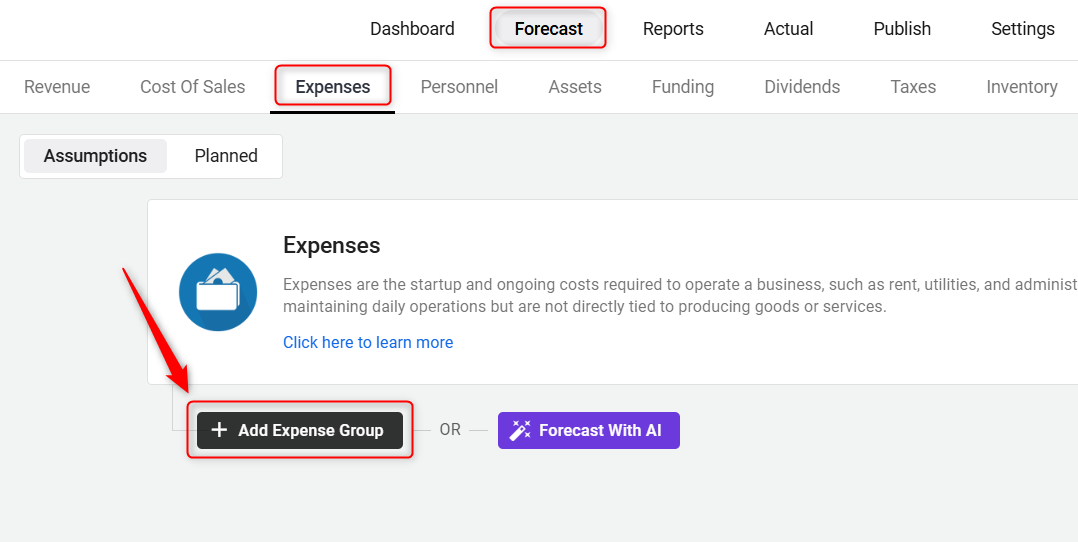
- 2
-
In the overlay that appears, enter the Expense Group title and click on Save & Next:
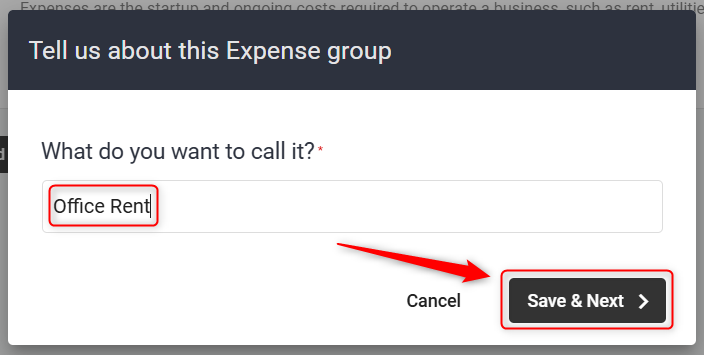
- 3
-
After creating an expense group, let's start adding expense items to the group. Click on the Add Expense to open the wizard overlay:
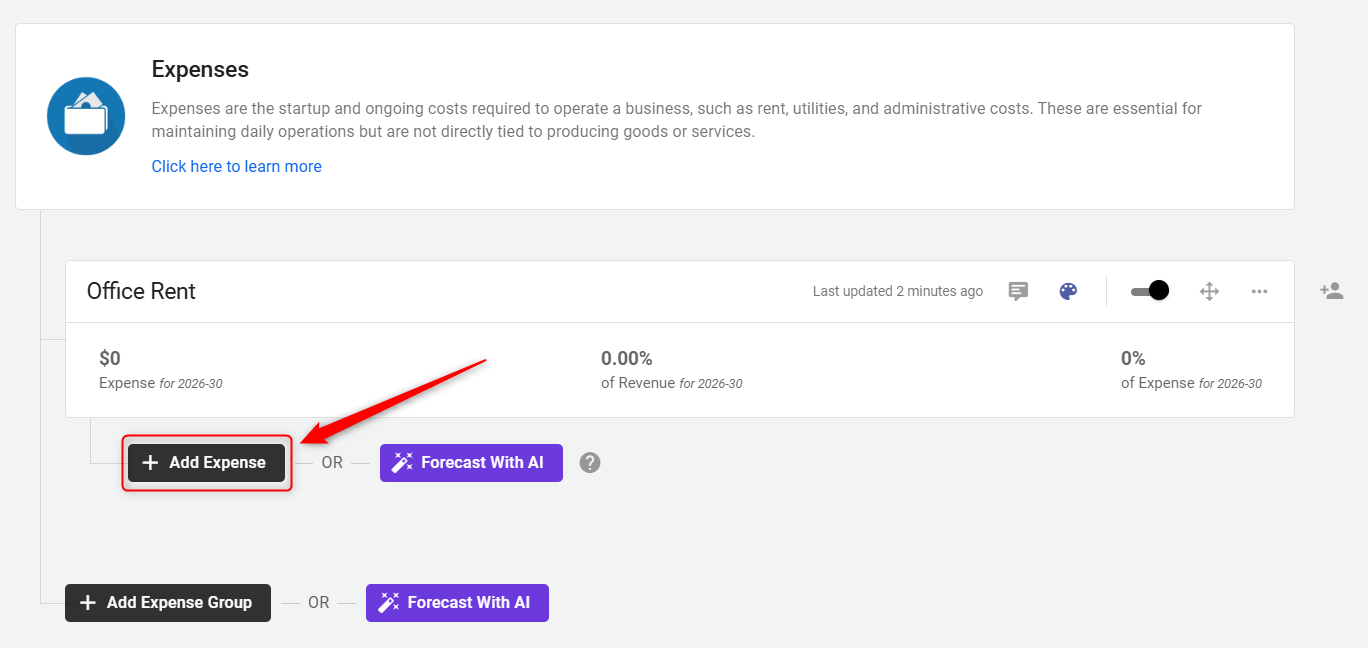
- 4
-
In the overlay that appears, enter a name for the expense:

- 5
-
Indicate how you want to enter the expense. Select Expense type from the list given below:

- If you choose a Constant amount, enter the amount you'll spend on this expense per day, per month, or quarter, or per year. Also, indicate the percentage variation in the expense amount. For example, if you want to increase the rent by 5% every year:
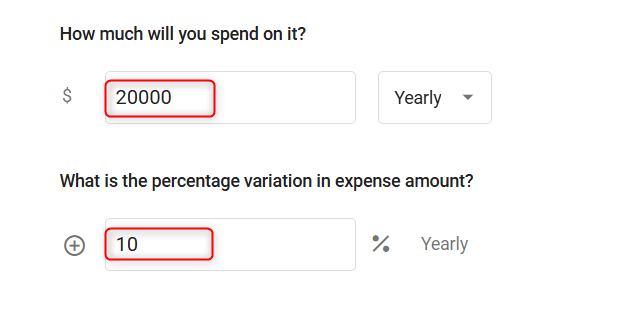
- If you choose a Per Unit, opt for this method when your expenses vary based on how many units you buy:
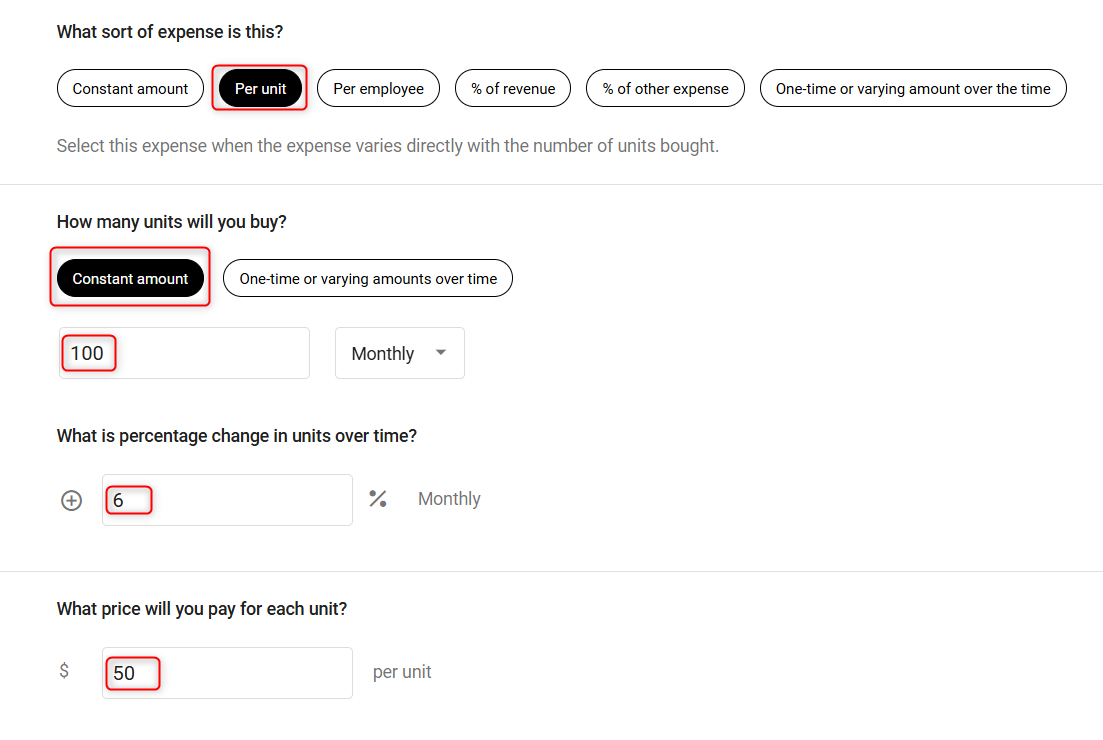
TIP: To add one-time expenses or varying costs/ fluctuating costs, use the One-time or varying amount over time in your finance stream.
- Per Employee Expense is most effective when you're dealing with costs that inherently depend on the number of employees. This approach allows for a more accurate and scalable method of forecasting expenses as your workforce changes. i.e., Training and Development, Work Equipment, and Travel Allowances.

When you select the Per Employee Expense, the system will prompt you to specify which Personnel Expense to apply. You can select your Personnel expenses as per requirement.
The system then calculates the total expenses based on the number of employees recorded in that specific Personnel Expense category. You can directly enter the Expense figure in the field, and the system will calculate the expense based on the number of employees.

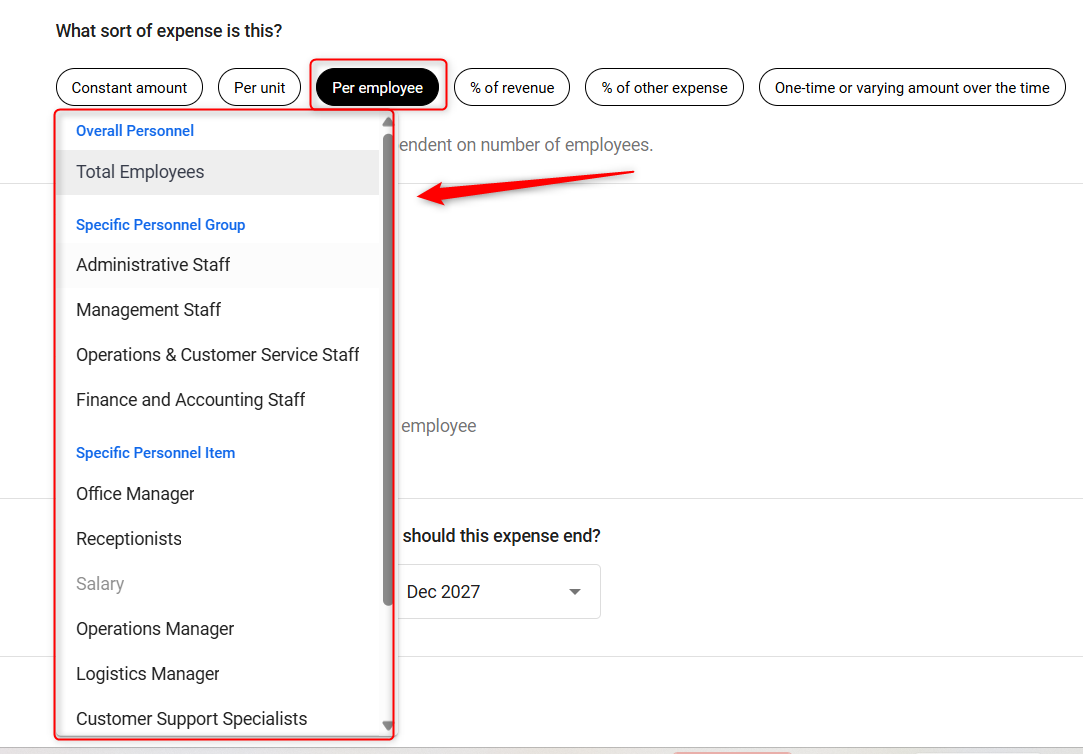
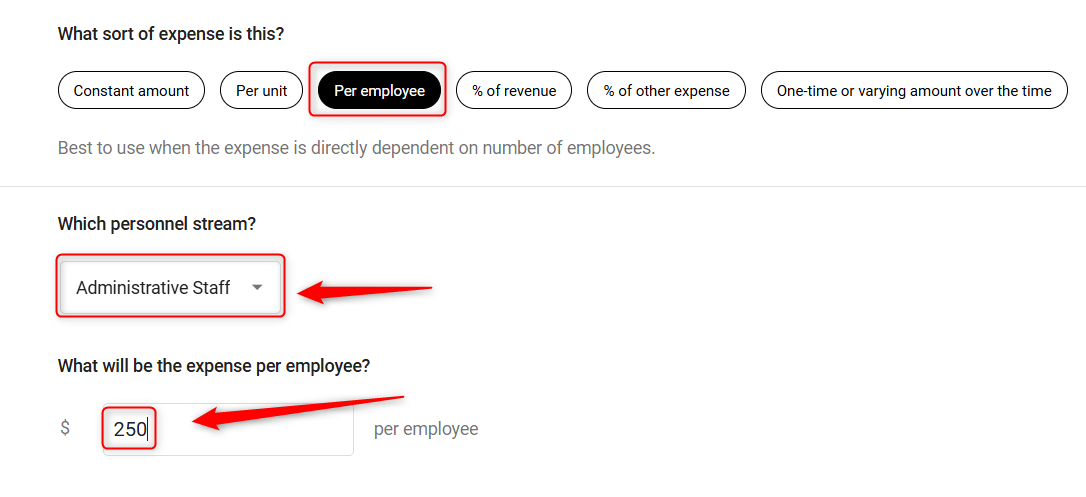
- If you choose % of Revenue, use this option when the expense amount depends on how much revenue you earn. You can choose to calculate the expense as a percentage of your total revenue, a specific revenue stream, or an individual revenue item.
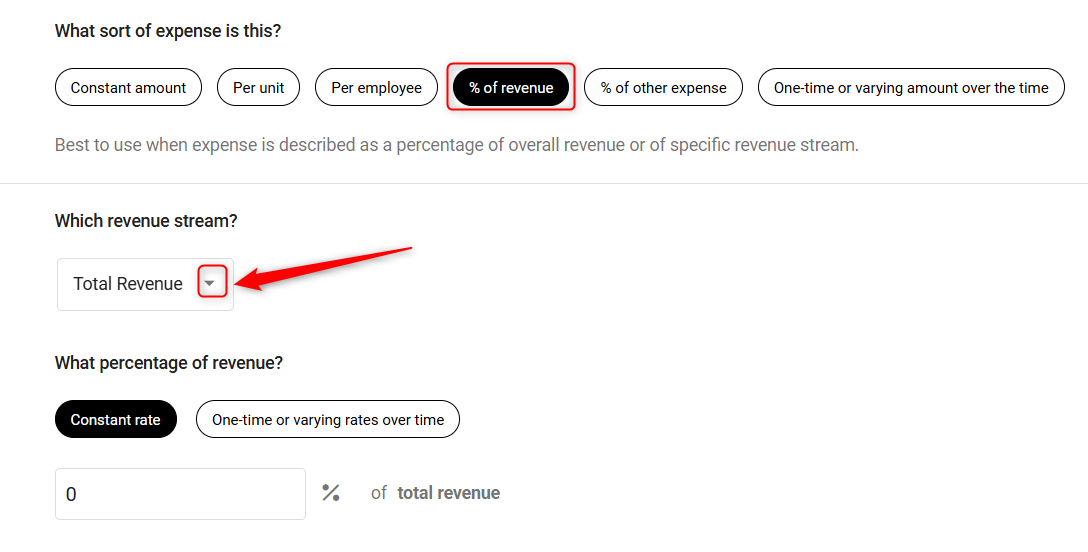

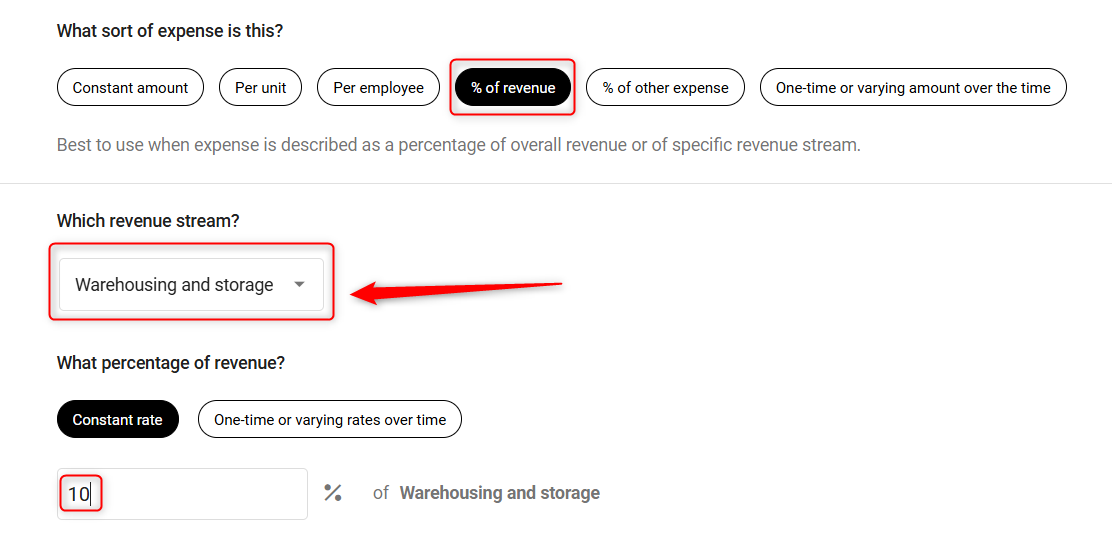
If you choose Varying amounts over the time or a One-time amount, enter how much you will spend in the Excel sheet, in the months in which you'll spend it:


- If you choose a Constant amount, enter the amount you'll spend on this expense per day, per month, or quarter, or per year. Also, indicate the percentage variation in the expense amount. For example, if you want to increase the rent by 5% every year:
- 6
-
Time Duration: Then indicate when the expense should begin and end. Select a date range. Click on Save.
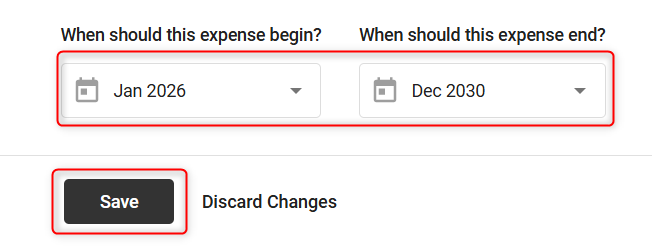
Manage Your Expense Groups and Items: Edit, Copy, or Delete
- 1
-
To duplicate a full expense group, click the three dots on the group card, then select Copy Group from the dropdown.
This will create a copy with all the associated expense items included. Click on the Delete Group option if you want to delete the expense group.
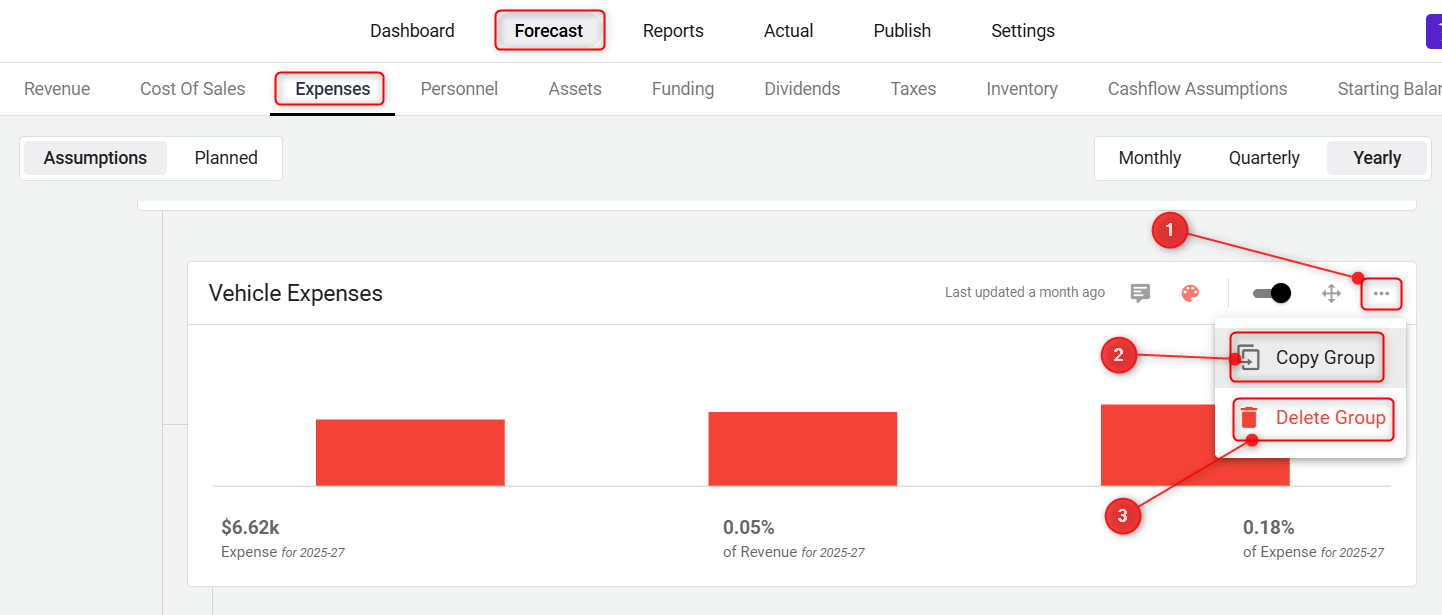
- 2
-
Click on Duplicate Item to create a copy, or Delete Item to remove the expense from the list:
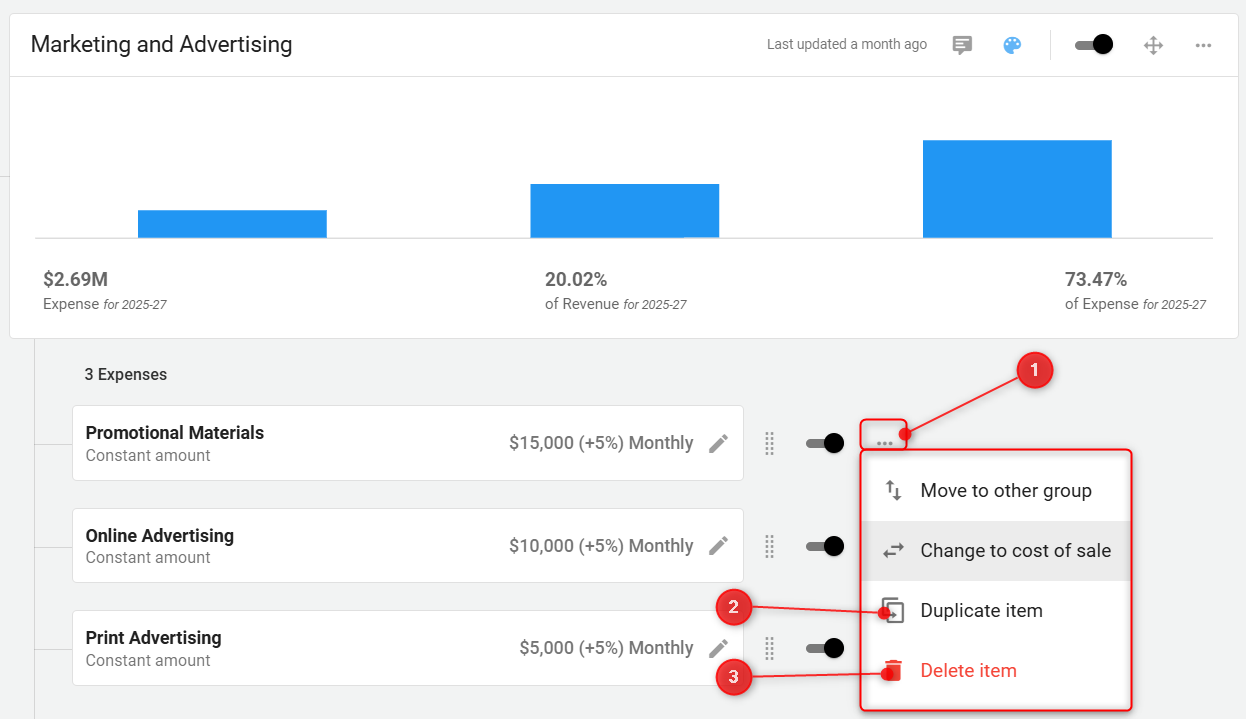
TIP: Moving finance items from one group to another is hassle-free. Check out our help guide here.
TIP: Switch finance items between COS and Expenses effortlessly. Click here for more.
- 3
-
To edit an expense item, click on the Edit icon:

Where does this entry appear in the financial statements?
Your expense entries appear in an itemized list in the Profit and Loss statement as Operating Expenses:

The expenses are calculated in the Balance Sheet and Cash Flow statement, but not explicitly. Instead, your expenses are used to calculate your available cash, which appears in the Assets portion of the Balance Sheet:

In the Cash Flow, your expense entries are calculated into the lines shown below:





















